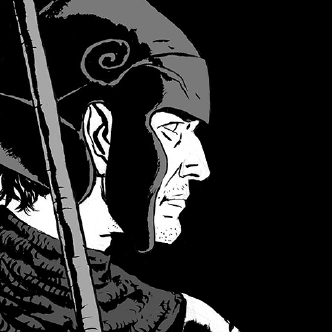At Eternity’s Gate – review
- Jarek Kupść

- Mar 24, 2020
- 2 min read
At Eternity’s Gate probably doesn't deserve too much attention. If anything, it offers a visceral depiction of the painting craft itself – the arduous process of seeking a subject, the endless sketching in search of a perfect composition, the messiness of mixing the pigments to find the right hue, the vibrancy of brushwork rushing to capture the immediacy of the moment. It's clear that Julian Schnabel, the painter, knows the routine. But as a director, he opts for the shaky-cam, as if to extend Vincent's feverishness into the medium of film. The result is, well, shaky. The jerkiness of camera, the jump cuts, and the odd angles cancel out the emotion.

Then, there is the incongruous casting. While Willem Dafoe is a terrific actor, his Vincent is an old man. Not old by experience, but old by age. Thus, one of the most incredibly moving fraternal relationships in history – Vincent & Theo (four years apart) – achieves a father-and-son dynamic, which displaces the emotional core of this story. The 25-year old difference of age between Dafoe and Rupert Friend is beyond repair.

The same can be said of Gaugin. In real life five years Vincent's senior, here he feels like an apprentice, not a duelling partner. Oscar Isaac is usually terrific. Here, he looks and sounds lost, with Gaugin's notoriously tempestuous temperament nowhere in sight. I could never believe this character would pull a knife on anyone.
Aside from Theo and Gaugin, the rest of the cast seems appropriately lived-in, rather beautifully fitting the story.
Well, alright then. This is an impressionist movie, asking the audience to suspend a fair share of disbelief. It hinges on Dafoe's anguish, and no one in film does that better these days. If only the filmmakers placed more trust in the performance, and didn't try to enhance it through awkward stylistic gimmickry. The story lacks focus, but that is forgivable – Vincent lived for the moment, not for continuity. But cinematically, for a movie about one of the greatest visionaries in art, At Eternity’s Gate lacks any sense of consistent aesthetic.

There is a paradox here. Of all the Vincent Van Gogh movies out there, and there are a few, the one that comes closest to capturing the spirit of the man is a golden-age Hollywood product. Vincente Minnelli's classically shot Lust for Life (1956) finds all the right tones: for the era, for the light, and, most of all, for the the agony of someone who had no choice but to follow his passions to the edge of a physical and mental breakdown. Kirk Douglas remains cinema's most compelling Van Gogh.




Comments